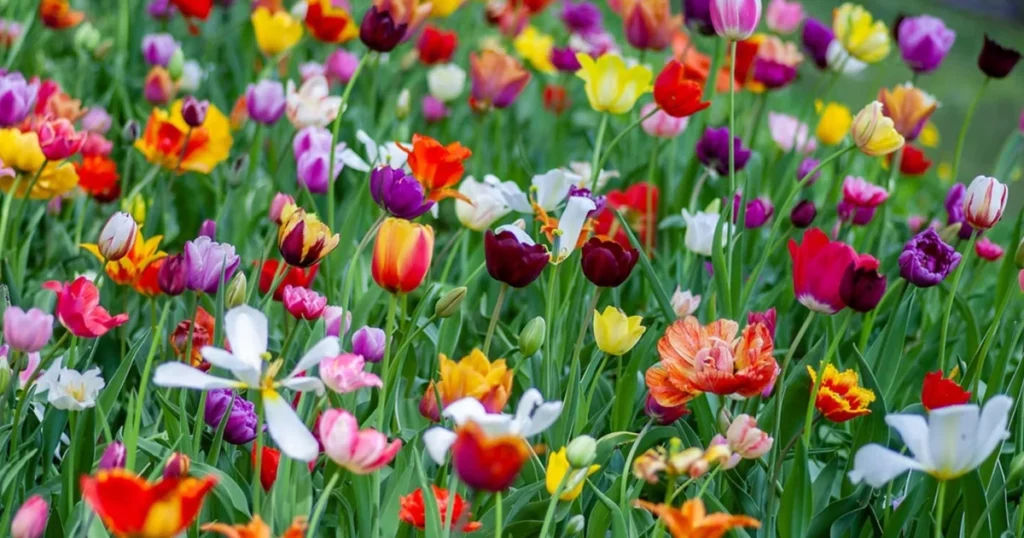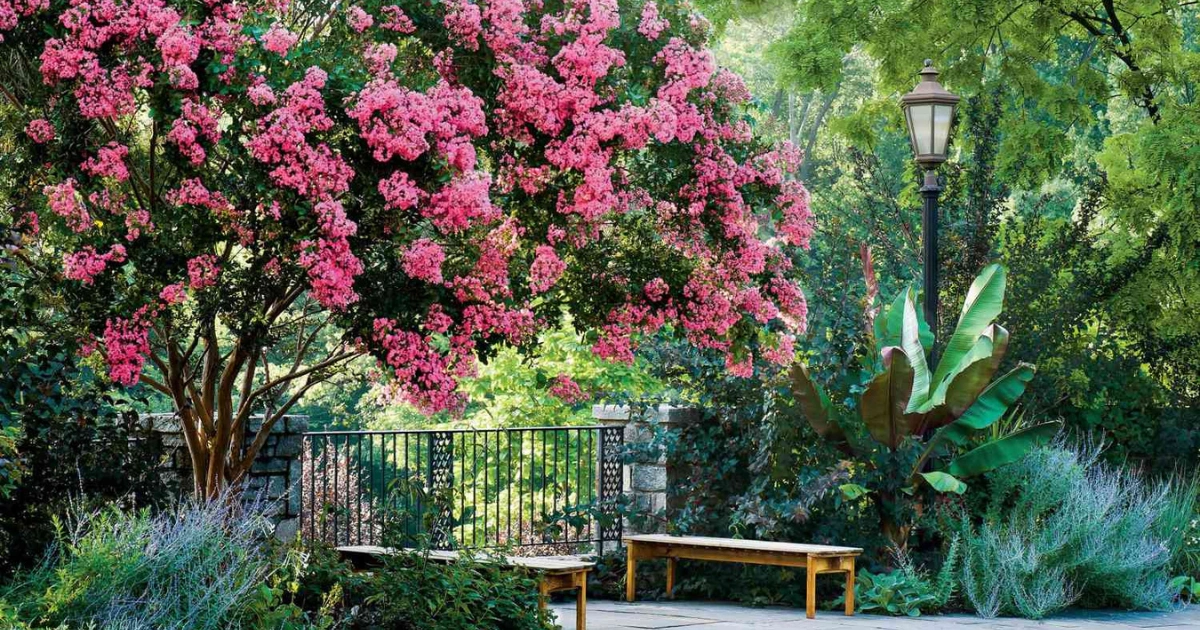Nothing says spring like the sight of blossoming trees. Whether it’s soft pink petals floating through the air or creamy white star-shaped blooms brightening the sky, flowering trees signal the joyful return of life to your garden. And they do more than just look pretty — they support pollinators, create structure in your landscaping, and offer fragrance, privacy, and even fruit in later seasons.
This guide reveals some of the best flowering trees to plant in your yard — ornamental plum, cherry, dogwood, magnolia, flowering pear, and redbud (Cercis), each with its own charm and role. You’ll also get practical planting advice, seasonal care tips, tools you need, and answers to common questions. Want to go deeper into your garden planning? You can pair your trees with compost tips or edible borders by checking posts like Best Vegetables to Grow in Containers or Coffee Grounds in the Garden: Benefits & Myths on Secrets of the Green Garden.

Why Spring Flowering Trees Are Essential for Garden Beauty and Health
Flowering trees bring your outdoor space to life in early spring, long before summer plants wake up. Here’s why they’re worth planting:
They provide the first pollen and nectar sources of the year, supporting bees, butterflies, and other pollinators.
They bloom before their leaves emerge, offering a striking silhouette of color against bare branches — a true seasonal spectacle.
They add fragrance that perfumes your yard — especially magnolia and cherry blossoms.
They boost property appeal with seasonal interest and curb appeal.
They layer beautifully with bulbs, shrubs, and herbaceous perennials for dynamic spring gardens.
Plus, many of them go beyond the bloom: flowering pears give you autumn color, dogwoods produce berries that birds love, and cherries dazzle with their famous drifting petals.
Step-by-Step Guide to Choosing and Planting Your Tree
1. Decide your goal
Want something that blooms first? Attracts bees? Stays small? Grows fast? Each tree has its strength — match it to your garden needs.
2. Measure your space
Trees like magnolia and pear can grow tall and wide. Others, like redbud or dwarf cherry, fit nicely in small yards. Know your space before you dig.
3. Pick the right site
Most flowering trees need full sun and good air flow. Redbuds tolerate a bit of shade, and dogwoods prefer dappled light in warmer climates.
4. Choose the right species
Early bloomers include plum and magnolia. Mid-spring: cherry. Later: dogwood and flowering pear. Select a mix to extend your blooming season.
5. Plant in early spring or fall
This gives roots time to settle before summer heat or winter frost.
6. Dig the right hole
Make it twice the width of the root ball but no deeper. Mix in compost, place the tree level with the soil line, and firm the soil gently.
7. Mulch and water
Add mulch in a donut shape — not touching the trunk — to keep roots cool and moist. Water deeply once a week during the first growing season.
8. Prune smart
Only prune after the flowering season is over. Avoid cutting buds in winter unless you’re removing dead or damaged branches.
9. Support pollinators
Plant near pollinator-friendly herbs, bulbs, or veggie beds. You can improve your garden’s ecosystem by pairing trees with biodiversity-boosting elements like compost or recycled coffee grounds.
Common Mistakes and How to Avoid Them
Planting too close to buildings or power lines is a common error — always check the mature size of your chosen tree.
Pruning at the wrong time can remove next year’s flower buds. Most trees should only be trimmed right after flowering ends.
Overwatering or letting mulch touch the trunk may cause root rot and pest issues. Keep soil moist, not soggy.
Choosing weak or invasive varieties can lead to breakage or spread issues — especially with some ornamental pears. Opt for native or non-invasive cultivars.
Ignoring biodiversity by planting only one species limits your garden’s ecological value. Mixing species helps pollinators and builds resilience.
Regional and Seasonal Planting Tips
In colder climates (Zones 4–6), go for hardy varieties like redbud, dogwood, and star magnolia. Avoid frost-sensitive trees like saucer magnolia unless you can shelter them.
In mild zones (7–9), almost all trees in this guide thrive. Just be cautious about wind exposure for top-heavy blooms like magnolia or cherry.
In humid areas, space trees properly for airflow and disease prevention. Prune crowded branches and avoid overhead watering.
In dry regions or cities, choose drought-tolerant species like ornamental plum or dwarf varieties, and always mulch deeply.
For small patios or urban gardens, go with narrow or dwarf trees like cherry ‘Amanogawa’ or compact redbuds.
Want to feed the bees? Plant under your tree with pollinator-friendly groundcovers or early perennials.
Tree-by-Tree Benefits and Features
Plum (Prunus spp.)
Blooms early in vivid pink. Great for early-season color and compact gardens. Attracts bees right after winter.
Cherry (Prunus serrulata)
Iconic for pink or white blossoms and drifting petals. Some dwarf varieties fit patios. Adds elegance and seasonal beauty.
Dogwood (Cornus spp.)
Features star-shaped blooms in white or pink. Loved by birds in fall and tolerates part shade. Adds seasonal flair for months.
Magnolia (Magnolia × soulangeana)
Produces giant, fragrant blossoms in white, pink, or violet. Often blooms before any leaves show. Great for front-yard drama.
Flowering Pear (Pyrus calleryana)
Covered in white blooms in early spring. Glossy leaves follow. Be sure to choose non-invasive cultivars for safety.
Redbud (Cercis canadensis)
Fuchsia blooms cover bare branches in early spring. The heart-shaped leaves add interest later. Grows well in varied soils.
Each tree has a purpose: whether it’s early bloom, pollinator attraction, shade, or seasonal charm — there’s one for every yard.
Tools and Materials Checklist 🌿🛠️
🌱 Tree (bare-root or potted)
🪣 Compost or well-aged soil amendment
🕳️ Shovel
💧 Watering can or hose
🌳 Mulch (bark or wood chips)
✂️ Pruning shears
📍 Tree stake (optional for windy areas)
📅 Calendar to track watering and pruning
Before planting, make sure your tools are clean and your soil is workable. Keep the tree’s root ball moist until it goes in the ground.
Frequently Asked Questions
Which tree blooms earliest in spring?
Plum and magnolia are among the earliest. They often flower before the first leaves even appear.
Can cherry blossoms grow in small gardens?
Yes! Dwarf and columnar varieties like ‘Amanogawa’ cherry are perfect for tight spaces and offer the same iconic bloom.
How long do plum blossoms last?
Usually 7 to 14 days, depending on temperature. Cool weather helps extend the bloom period.
Which magnolia is most fragrant in spring?
The saucer magnolia (Magnolia × soulangeana) is widely known for its large, fragrant flowers in pink or white.
What tree has fuchsia blossoms before the leaves?
Redbud trees (Cercis canadensis) bloom in deep pink or purple along bare branches before the leaves emerge.
How should I care for flowering trees after planting?
Water weekly during the first season, mulch lightly, and prune only after blooms have faded. Avoid fertilizer in the first year.
Conclusion: Your Spring Garden Starts with the Right Tree
Spring isn’t just a season—it’s a feeling. The right tree brings color, fragrance, and new life to your garden, creating a space where nature thrives and visitors pause in awe.
Whether you choose the romantic cherry, bold redbud, or graceful magnolia, you’re not just planting a tree — you’re planting an experience that returns every year with beauty and meaning.
Which tree are you most excited to plant? Let us know in the comments, or share your blooming success story with a photo. And if this guide inspired you, pass it along to a fellow gardener — spring is meant to be shared.


Nieuwste porno platforms bieden geavanceerde inhoud voor volwassenen. Kies voor betrouwbare frisse sites voor veilig kijken.
Also visit my webpage VIAGRA FOR YOU
https://t.me/s/Top_BestCasino/173
https://t.me/iGaming_live/4869